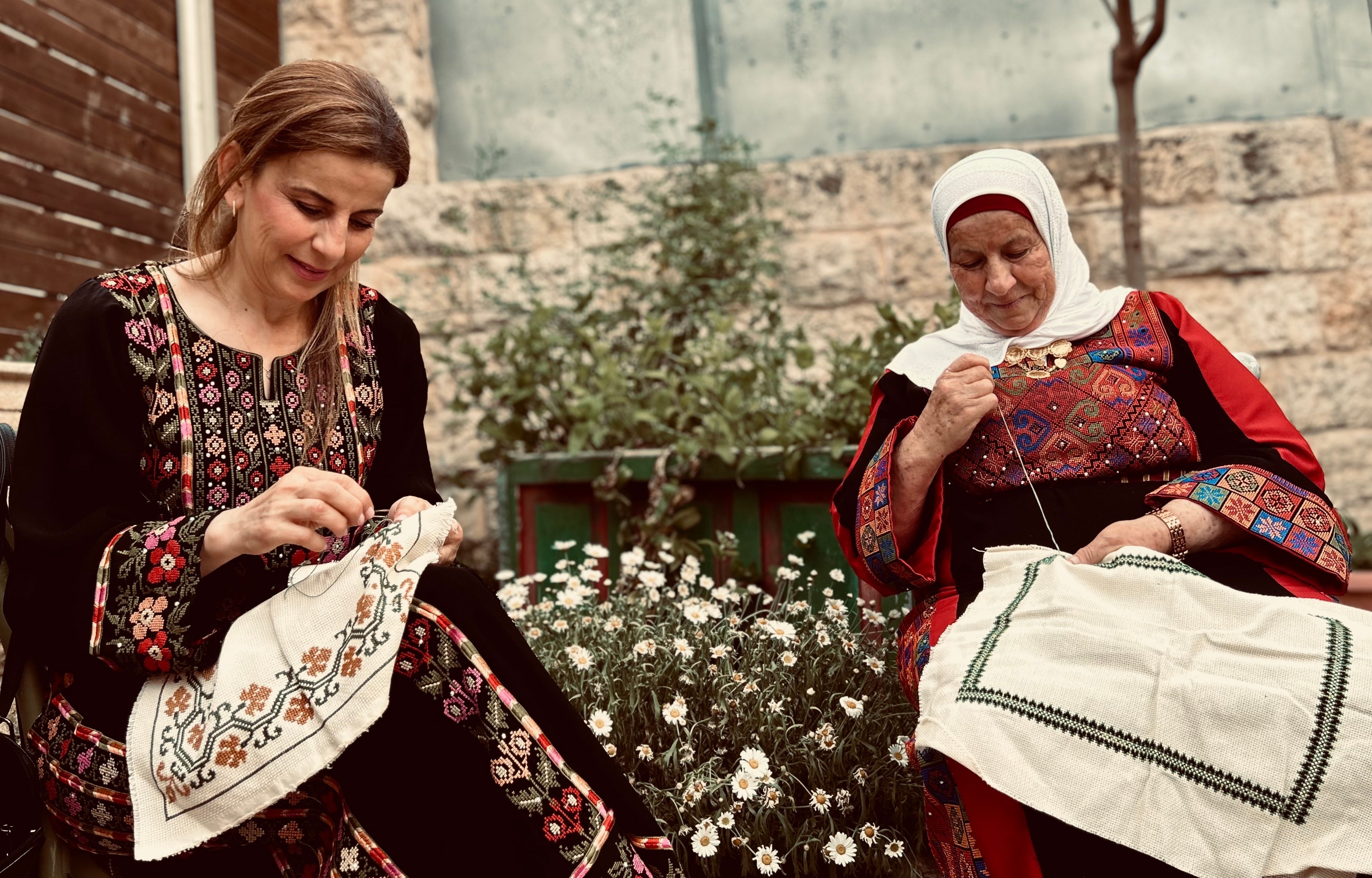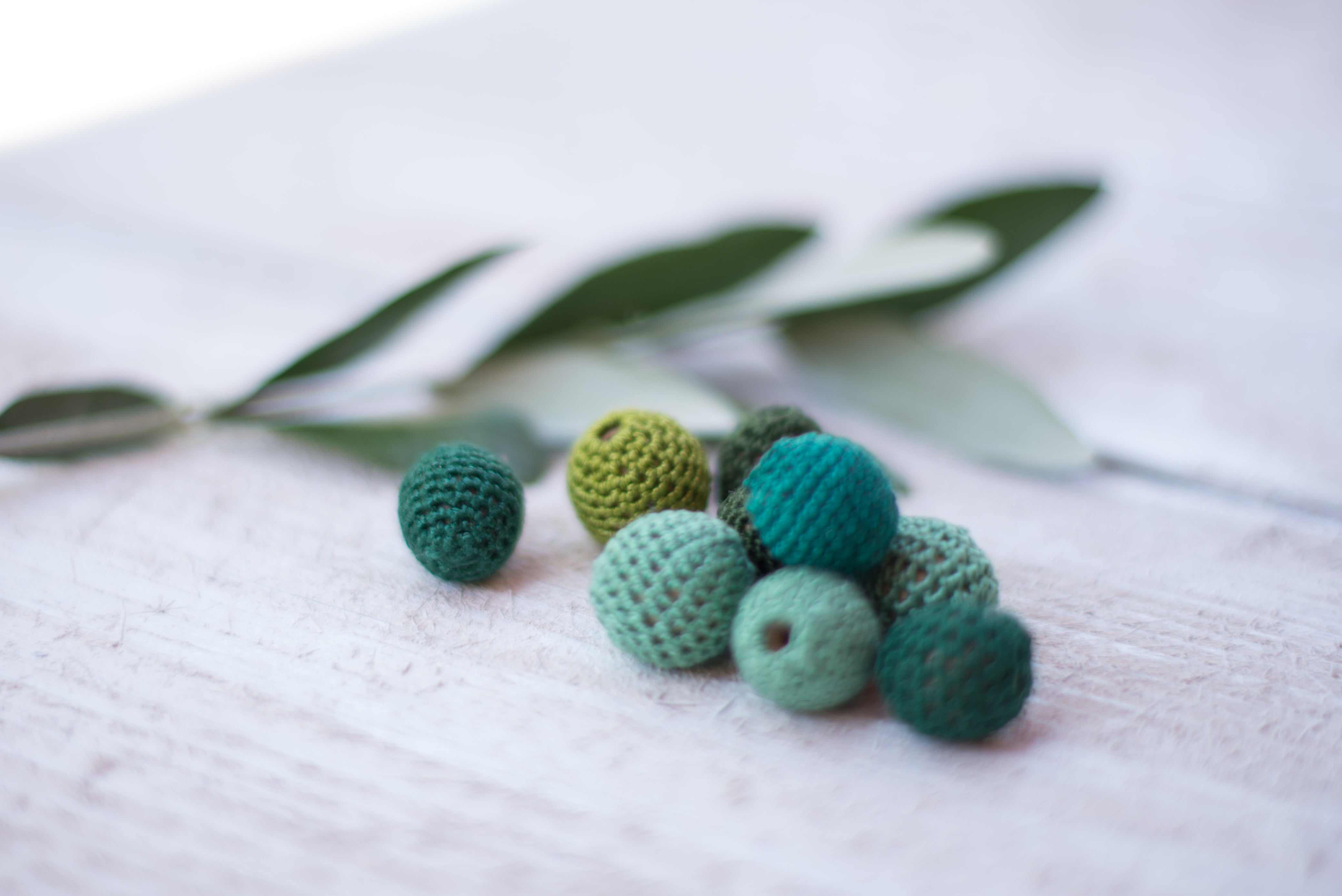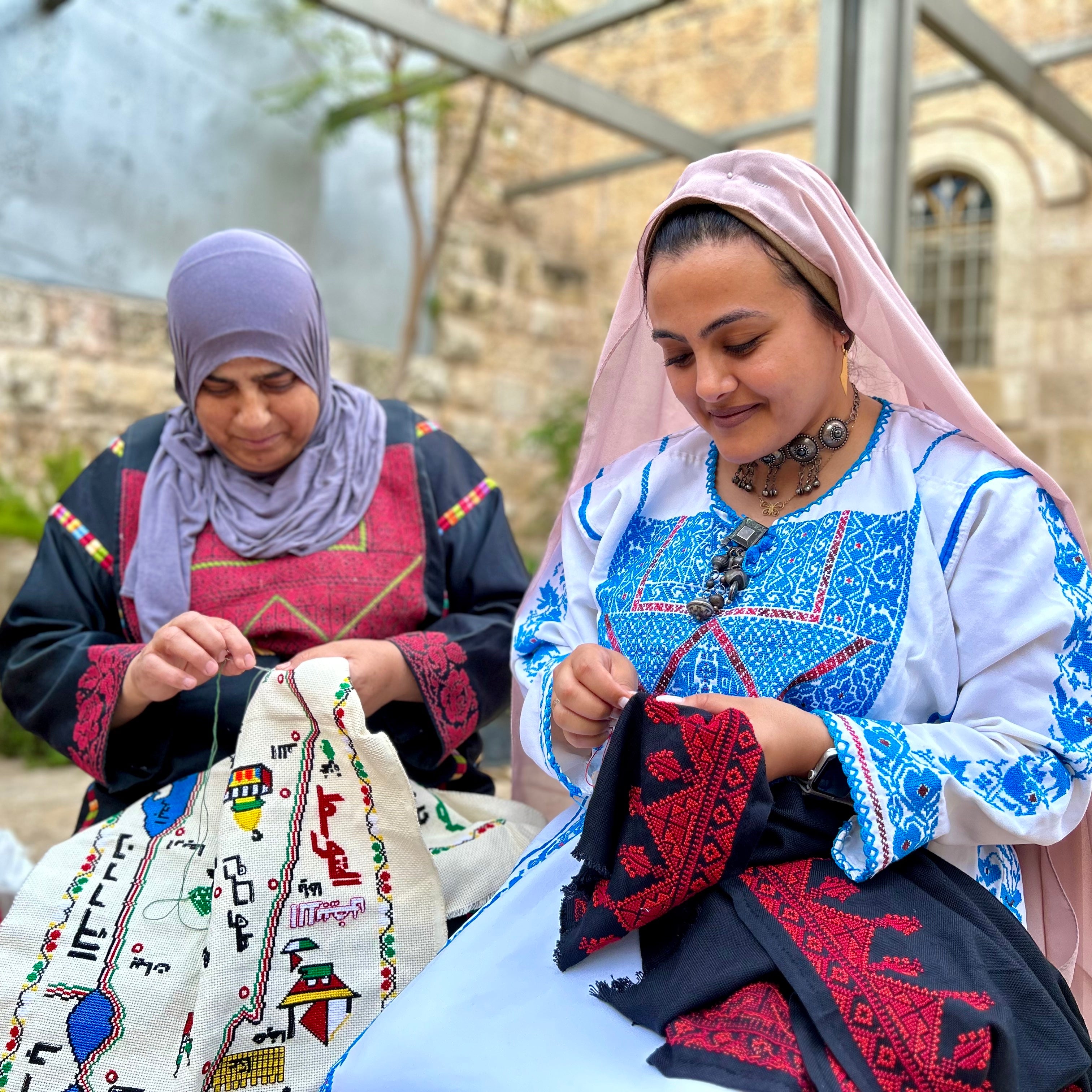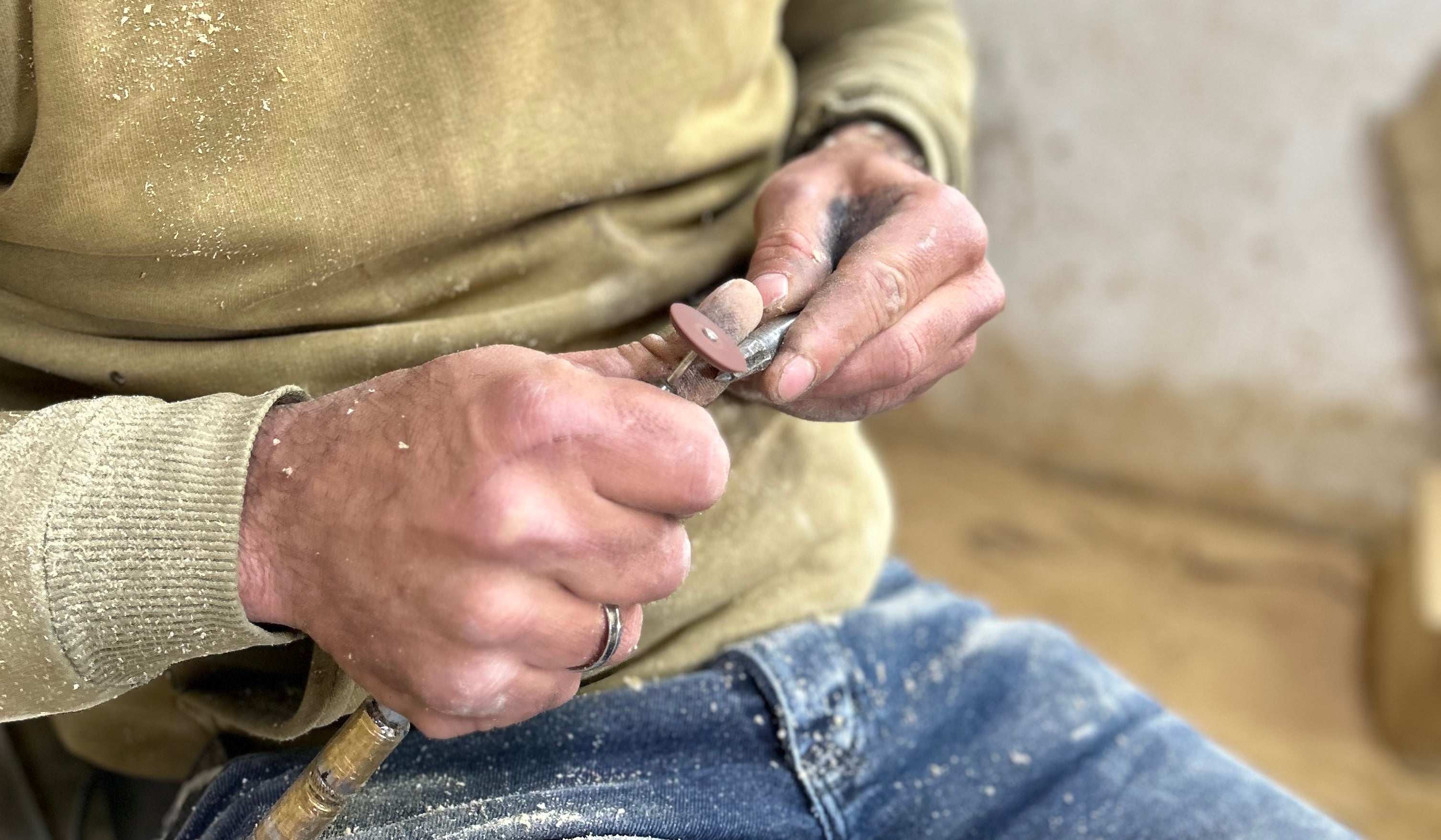
A Timeline of Palestinian Tatreez
We've put together a brief look at the incredible history of Palestinian tatreez, which is ever evolving as the story of the Palestinian people's fate is continuously being written.
The history of Tatreez, and really the history of Palestinians at large, can be divided into two parts: Life in Palestine before the 1948 Nakba, Arabic for The Catastrophe, and life after it. Traditionally and historically, tatreez cross-stitch embroidery is a female collective creative outlet in Palestine, going back centuries, but really taking shape as discernibly Palestinian from the mid 1800s and was typically practiced by village women of Palestine, called fellaheen.

In the olden days, Palestinian girls would be taught the art of tatreez from age six or seven, inspiring them to keep alive this unique, time intensive and beautiful craft and thereby preserve their legacy as Palestinians and more specifically as Palestinian women.
Tatreez was (and continues to be for some) an essential part of a Palestinian woman's life. It give meaning and identity to the garments (“thobes”) by employing unique means of creativity to express themselves as a people as well as individuals. It also strengthens the wearer's own identity by dawning their creation on a daily basis, closely linking their own selves to their creation of tatreez “thobes”.
Which tatreez “thobe” a Palestinian woman would wear would depend on a number of aspects including the village she was from, her status in society, marital status, social class, if it was a casual or special occasion and sometimes even her mood.

The iconic cross-stitch tatreez experienced a multitude of influences over the centuries, as did the land of Palestine itself. Notable time periods affecting and influencing all walks of Palestinian life are the Ottoman Occupation (1516 - 1918) as well as the British Mandate (1918 - 1948). Each change Palestine and its people underwent was commemorated in the art of tatreez embroidery. The artisans would add layers to the traditional foundations of tatreez, which included using colorful textiles such as silk, the use of geometric patterns, using specific symbols that could be found in the landscapes surrounding them and the villages specific landmarks. Influenced and inspired by certain historical time periods the foundations of tatreez would then be transformed - still kept recognizable - into something new, for example weaving new symbols into the classic designs, which were derived from changes in landscape and change in people, new industries emerging and so on.
A monumental turning point in Palestinian history is the 1948 Nakba, which has repercussions to this very day. Through this violent experience, the ethnic cleansing of Palestinians, the rendering of some close to 850,000 people as refugees within their own country, every aspect of Palestinian life then was branded with a new layer of identity: sumoud (resilience). Since the end goal of the suffocating Israeli Occupation is the burial of Palestinian existence itself, 1948 and the years after it, were defined by the colonizer's attempt to stifle all aspects of Palestinian life including their art making. After some years of temporary suspension of tatreez making - in order to focus on more immediate needs - the ancient skill of cross-stitch art was picked up again, this time embedded in the tapestry of Palestinian resistance and resilience, a new political art form. A poetic feature of this tragedy is the coming together of Palestinians on a whole new scale, supporting each other and exchanging ideas, knowledge, way of life unique to specific locations within Palestine. So, the distinctive and always exquisite styles of tatreez dresses, unique to their specific village, and the how-to was then exchanged amongst Palestinian women, creating yet a new style of tatreez, a mash-up and combining of different styles and reviving the ancient craft after a slumber.

For this reason, the changing nature of tatreez, we can agree that “Tatreez, then, is a living archive that witnesses and documents what Palestine and Palestinians have historically endured”, as said by Khaled A. in his article.
Check out our tatreez collection here. It's growing and we'll be adding cushion covers and shawls soon!







Leave a comment
This site is protected by hCaptcha and the hCaptcha Privacy Policy and Terms of Service apply.